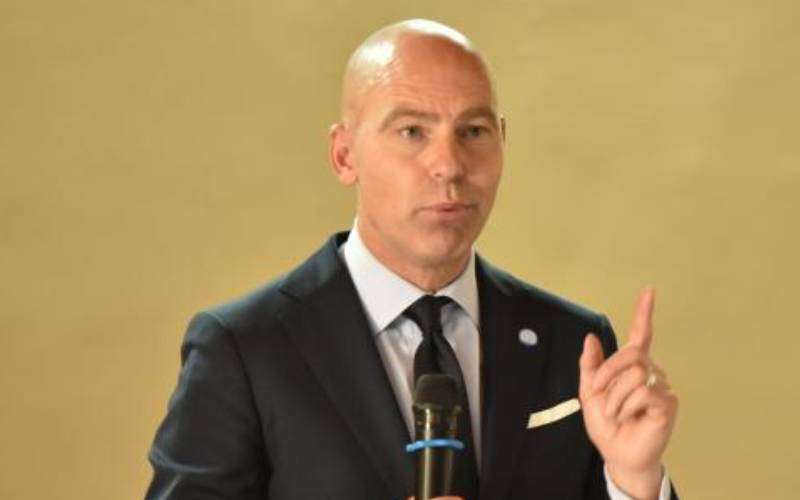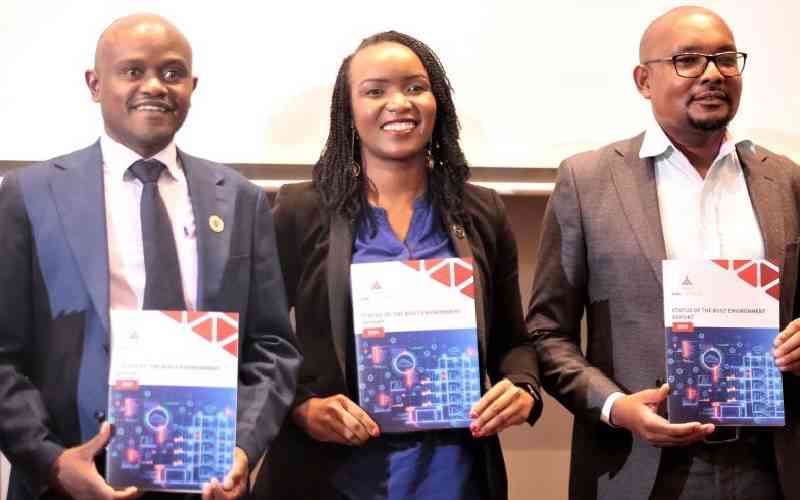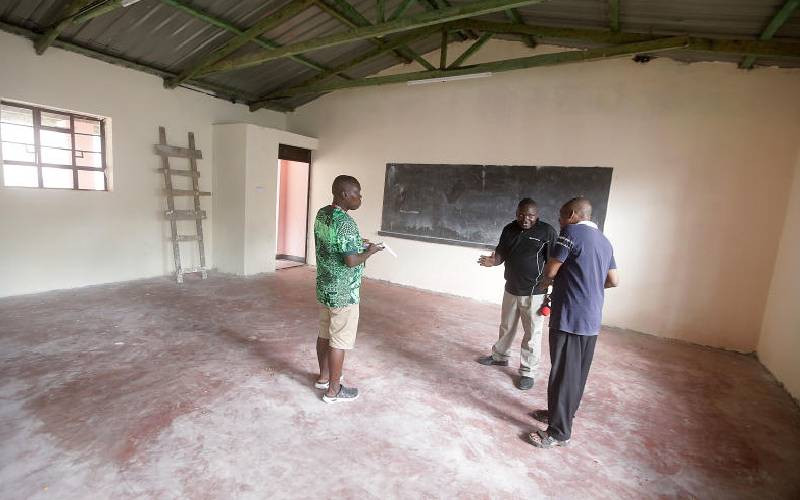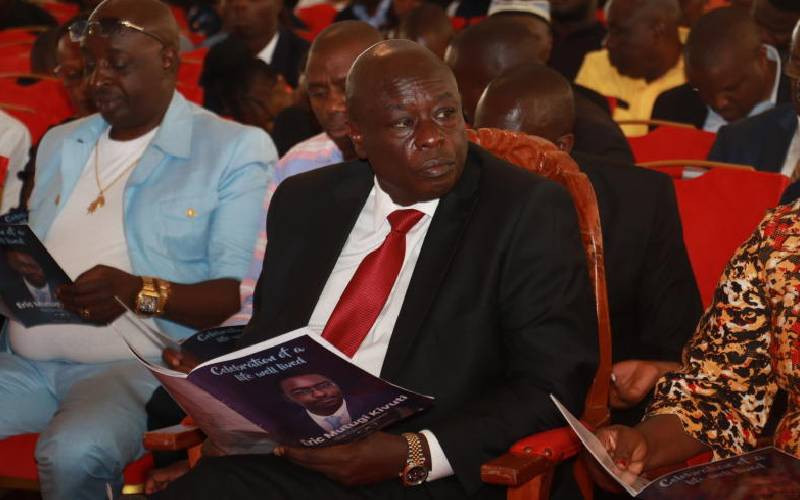By AUSTIN OKANDE AND DAVID ODONGO
If there are groups that many people with disabilities curse then it must be the architects, the engineers and vehicle makers.
Accessing buildings and public transport in Nairobi is a nightmare for people with mobility problems since the city does not have special facilities and services.
Many residential buildings, for example, are highrise apartments and the washrooms, light switches, kitchen cabinets or water taps are unreachable for anyone with a basic wheelchair.
Yet, there are about 1.6 million people with some form of disability, according to the Kenya National Survey, majority of them being in Nairobi.
Caroline Nyaboke, an officer with National Council for Persons with Disabilities, told The Nairobian many people with disabilities have problems getting residential houses.
“They can only live in the ground floor, and the situation is worse if the house they choose isn’t self contained. We hope landlords will implement the 2009 bill that compelled them to make their houses easier to access for persons with disabilities,” Nyaboke said.
Experts in the building industry cite costs and space as a major hindrance in ensuring the disabled can enjoy the same privileges as the rest in society.
“The main reason why many developers don’t build ramps in residential buildings is because it is very expensive. Stairs are built on a gradient of 1:2, but ramps are built 1:10,” city architect Susan Mwaniki told The Nairobian.
“This simply means for every 1m in height, you need a ramp of at least 10m. Most buildings have 3m floor-to-floor height, so the developer will have to construct 30m of ramp from floor to floor and that is very expensive.”
The Constitution requires that the authorities ensure reasonable access to all places, public transport and information and educational institutions to all the disabled in Kenya.
And the Persons with Disabilities Act of 2009 requires that contractors and owners of public structures ensure they are accessible to all.
The disabilities Act gives owners of buildings a grace period of up to five years to retrofit their buildings to ensure they are compliant.
County government’s director of planning Rose Muema told The Nairobian that City Hall is currently working on a development master plan that will improve its accessibility to people with disability.
“In the developed world the road corridors has provision for persons with disability and this has since been factored in the recent construction of city’s roads,” Muema said. “We are also urging developers to submit to us construction projects with a clear indication on how such facilities will be fitted with provisions that will cater for the needs of persons with disabilities.”
Stay informed. Subscribe to our newsletter
When it comes to public transport, people living with disabilities face extreme challenges. A baseline survey done by Action Network for the Disabled (ANDY) last year found that only 3 per cent of matatu Saccos had any written policy concerning carriage of the disabled.
ANDY’s report titled, ‘Accessibility of Transport and Housing Rights for Persons with Disabilities’, cited lack of cooperation from drivers, conductors and other passengers in ensuring the disabled have an easy time using PSVs.
The designs of PSVs in Kenya are not friendly to the disabled and most of them try to avoid using public transport altogether.
In developed countries, buses are low-floor, some with retractable ramps for use by those with wheelchairs. They have spaces and are further equipped with special seats near the doors for wheelchairs users. Some buses even have guide dogs to help the disabled and the aged.
In Kenya, the passengers and the conductor often have to carry people with disabilities onto matatus and they are often squeezed in with other passengers. Some PSVs avoid the disabled at bus stops to save themselves the ‘hustle’.
Sharon Njeri, who is disabled, told The Nairobian the use of public transport in Kenya is a nightmare. She said most PSVs are restricted to specific parts of town and this makes it difficult for people with disabilities to travel.
“Some matatus only go up to bus station, yet a disabled person has business to attend to at Anniversary Towers. This means you have to either struggle all the way to the building or hire a taxi to take you across town and this is very expensive,” she said.
County government PRO Fidelis Mwanza told The Nairobian: “The law requires that all public means of transport be fitted with these facilities that allows persons living with disabilities use matatu’s. However in Kenya this has not been forthcoming because as much as the country’s matutu sector is private, it is also erratic.”
While presenting a paper recently during the national conference on disability and accessibility rights, Kenya Bus Service Management MD Edwin Mukabana said they will ensure their fleets meet internationally recognised standards.
He said KBS will invest in buses with ramps for the disabled to board with ease.
He also called on the city council to build ramps at boarding stages to enable people with disabilities board buses without straining.
When he took over office in April, Nairobi Governor Evans Kidero promised he will change the face of Nairobi and ensure special facilities and services are provided for the disabled.
In the recent months, the county government has been keen on ensuring parking spaces are reserved for people with mobility problems.
City Hall has set aside at least one or two slots for people with disabilities in every parking bay in the city.
City askaris have made several arrests of people using the lots with the disabled parking sign.
 The Standard Group Plc is a
multi-media organization with investments in media platforms spanning newspaper
print operations, television, radio broadcasting, digital and online services. The
Standard Group is recognized as a leading multi-media house in Kenya with a key
influence in matters of national and international interest.
The Standard Group Plc is a
multi-media organization with investments in media platforms spanning newspaper
print operations, television, radio broadcasting, digital and online services. The
Standard Group is recognized as a leading multi-media house in Kenya with a key
influence in matters of national and international interest.
 The Standard Group Plc is a
multi-media organization with investments in media platforms spanning newspaper
print operations, television, radio broadcasting, digital and online services. The
Standard Group is recognized as a leading multi-media house in Kenya with a key
influence in matters of national and international interest.
The Standard Group Plc is a
multi-media organization with investments in media platforms spanning newspaper
print operations, television, radio broadcasting, digital and online services. The
Standard Group is recognized as a leading multi-media house in Kenya with a key
influence in matters of national and international interest.









